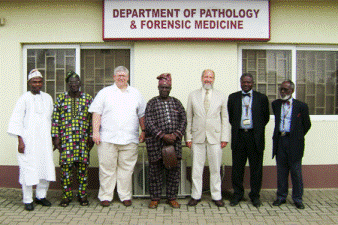Natural Resources, School of

Karl Reinhard Publications
Document Type
Article
Date of this Version
4-16-2018
Citation
Camacho et al. Parasites & Vectors (2018) 11:248
doi 10.1186/s13071-018-2729-4
Abstract
In the field of archaeological parasitology, researchers have long documented the distribution of parasites in archaeological time and space through the analysis of coprolites and human remains. This area of research defined the origin and migration of parasites through presence/absence studies. By the end of the 20th century, the field of pathoecology had emerged as researchers developed an interest in the ancient ecology of parasite transmission. Supporting studies were conducted to establish the relationships between parasites and humans, including cultural, subsistence, and ecological reconstructions. Parasite prevalence data were collected to infer the impact of parasitism on human health. In the last few decades, a paleoepidemiological approach has emerged with a focus on applying statistical techniques for quantification. The application of egg per gram (EPG) quantification methods provide data about parasites’ prevalence in ancient populations and also identify the pathological potential that parasitism presented in different time periods and geographic places. Herein, we compare the methods used in several laboratories for reporting parasite prevalence and EPG quantification. We present newer quantification methods to explore patterns of parasite overdispersion among ancient people. These new methods will be able to produce more realistic measures of parasite infections among people of the past. These measures allow researchers to compare epidemiological patterns in both ancient and modern populations.
Included in
Archaeological Anthropology Commons, Ecology and Evolutionary Biology Commons, Environmental Public Health Commons, Other Public Health Commons, Parasitology Commons


Comments
© The Author(s). 2018 Open Access This article is distributed under the terms of the Creative Commons Attribution 4.0 International License.